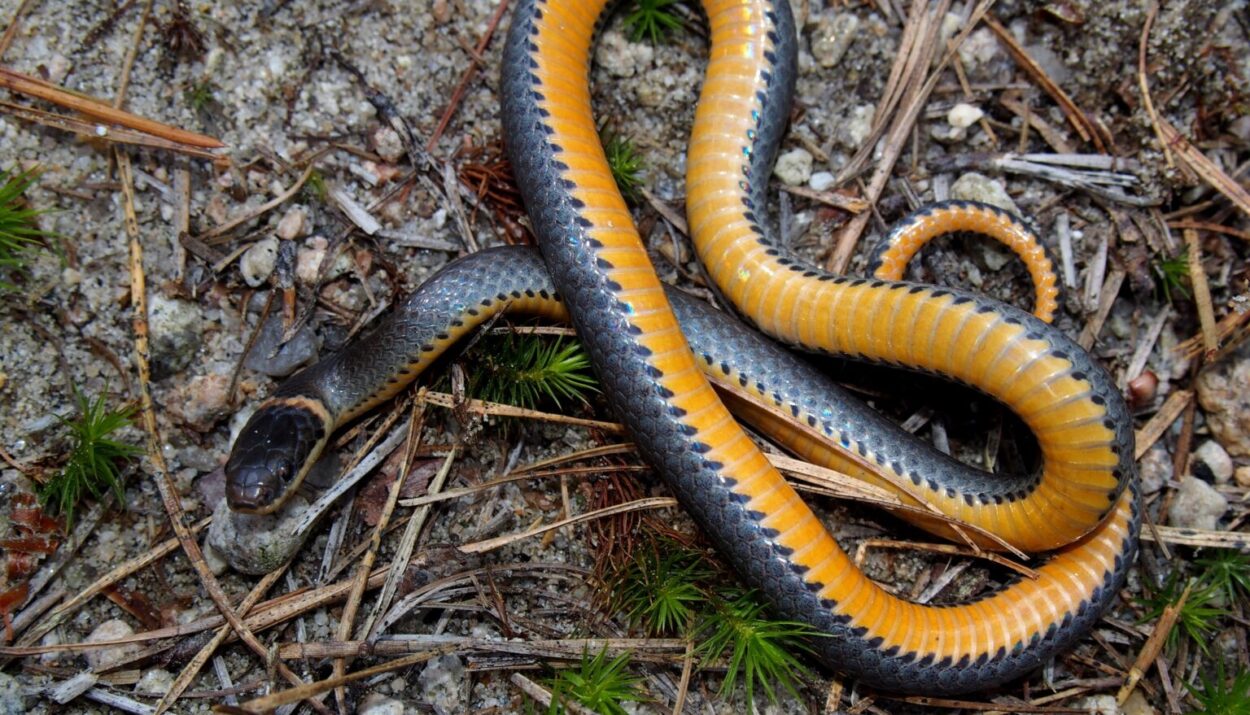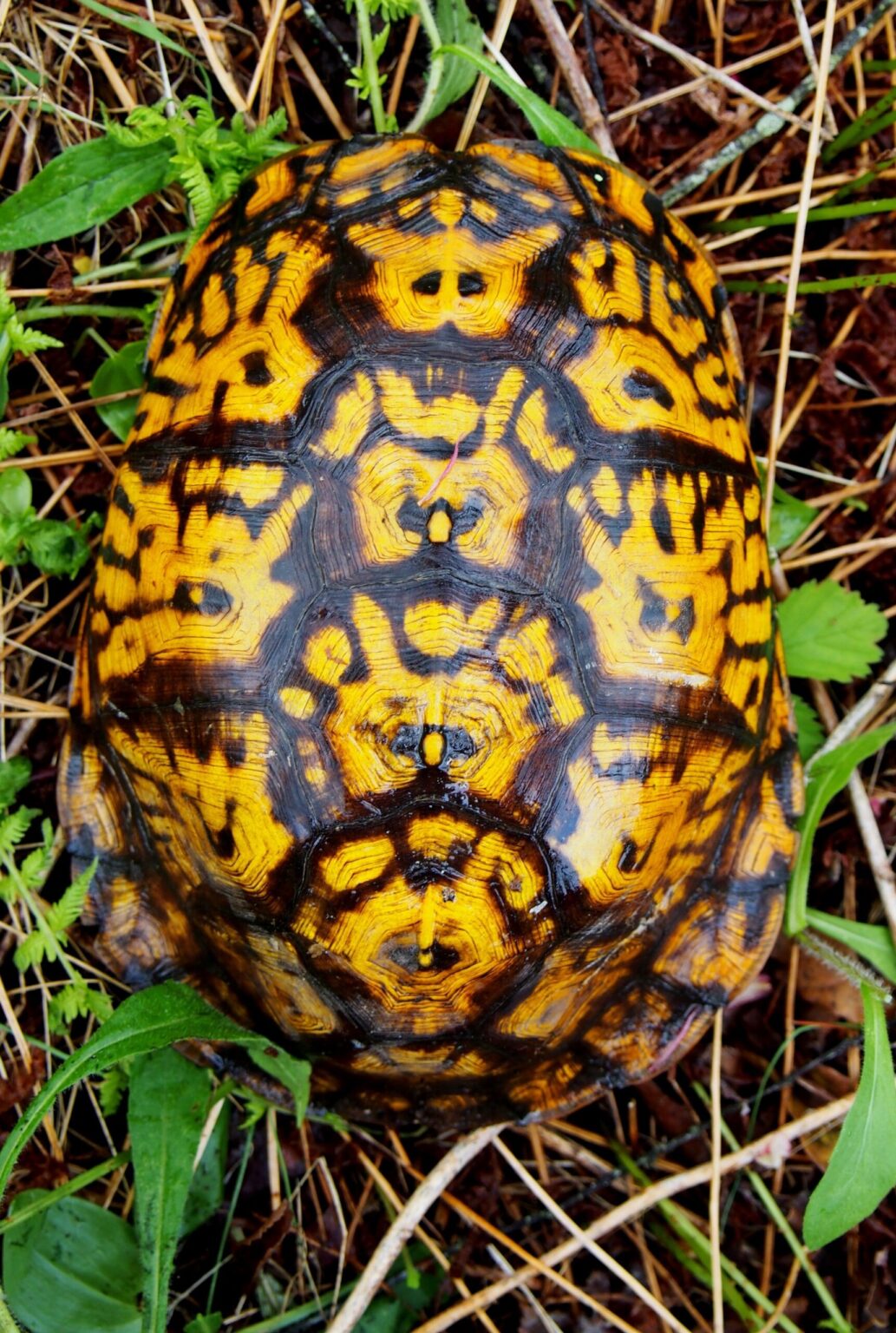What's crawling in your bushes?
By Cynthia Drummond, Rhode Island Current
 |
| The milk snake is primarily nocturnal and dines mostly on small rodents and sometimes birds, eggs and other snakes. (Photo by Christopher Raithel from ‘Reptiles of Rhode Island’) |
For a short-snouted dog, Mags proved to be a competent sidekick when it comes to stalking Rhode Island’s native turtles.
So says the pit bull’s owner, retired state biologist Christopher Raithel, who observed Mags sniff out the tiniest baby turtles during his field research trips to ponds andswamps around the Ocean State.
“I didn’t even train him,” said Raithel, who was the staff zoologist for the Rhode Island Heritage Program, and later, the nongame and endangered species biologist at the Department of Environmental Management before retiring in 2018.
“He just used to go with me, and he found a couple, and all you have to do is praise him and that’s pretty much it. He would find the ones that I could never see, because they were under the cover, so having him there was worth more than several other observers.”
Thanks to Mags’ dependable scent work, Raithel was successful in documenting every one of Rhode Island’s seven native turtles in his field guide “Reptiles of Rhode Island,” published last spring. But tracking all 13 of the state’s native snakes took more effort.
“Snakes, in particular, are very difficult to study,” Raithel said. “Turtles are a little bit easier to deal with, because you can put radios on them and glue stuff to them. But snakes are difficult to find and extremely difficult, impossible, to count.”
It took Raithel about five years to write the book, available in hard cover, which includes vivid photography and is based on research he began four decades ago to track native turtles and snakes in their respective habitats. He also conducted an exhaustive search of the historical record to detail the statewide distribution, demography, seasonal movement, reproduction and development, research needs, and conservation status of each species. Additionally, Raithel debunked myths about the cold-blooded species he has studied for years.
Take the common Snapping Turtle, which merits several pages in the book. In addition to descriptions of its size and distribution, Raithel includes a section on misinformation surrounding the species. “How often have we heard that ‘a snapper can bite a broomstick in half?’ They can’t,” he writes.
“Reptiles in Rhode Island” is available in hard copy with funding from the U.S. Fish and Wildlife Service’s State Wildlife Grants Program. All revenue generated by the sale of this book will be directed towards the state’s wildlife conservation efforts.
The book is a companion to Raithel’s “Amphibians of Rhode Island,” published in 2018. The new book is shorter, partly because there are fewer species to cover but also because the lives of reptiles are less complex than those of amphibians.
“With amphibians, you have the eggs, the tadpoles, rather complicated developmental sequences and stuff, and so, the life history is more complicated for amphibians.,” Raithel said. “With reptiles, you know, they lay eggs, the eggs hatch. That’s basically it.”
Reptiles are also more vulnerable than amphibians, Raithel said.
“There are some issues with disease and things like that, but if you protect the habitat, the amphibians are pretty much going to be there,” he explained. “But, it’s not true with the reptiles, because a lot of them are valuable and are highly sought by poachers. So, you can have the habitat set up and you can have a place that you think is a preserve, but if it gets raided by poachers, those animals are gone and they’re never going to come back.”
It’s why, despite detailed information on each species, Raithel won’t tell readers precisely where species can be found. Like many herpetologists, he is committed to protecting his research subjects.
“Honestly, I pulled my punches in terms of what to include, because I didn’t want to put information in it that would make it easier for people to collect them,” Raithel said. “There’s nothing in there about how to find them, places you typically see them. I left that out intentionally. I left out some of the maps also, because I didn’t want to tip off people where these things were.”
Turtles face the greatest risks, because in addition to being struck by cars, they can end up as exotic pets, or even sold as food.
“It’s a huge problem,” Raithel said. “A lot of them are collected and sent overseas to illegal pet markets and stuff, and it’s frankly very difficult to stop that trade.”
The poaching of turtles can be charged as either a civil violation heard in traffic tribunal with a $100 fine or as a misdemeanor heard in district court. Please see applicable language and RI general law statute references below. This is often at the discretion of the responding officer given the circumstances and history of the violator.
Rhode Island law prohibits the removal of wild reptiles and amphibians and violators may face either a civil charge and possibility of up to a $100 fine or criminal misdemeanor charge with a possible penalty of up to $500 fine and up to 90 days in prison.
Turtles are long-lived and slow to reproduce, so their populations are not quickly replenished.
“Once a turtle gets to adulthood, 10 years, 15 years old, it’s not supposed to die,” Raithel said. “They’re supposed to live a long time. That’s what they do, and if you take that animal out of the population, or, you know, run over it with a car or send it to some meat market somewhere, there’s just no way they can produce that animal again until another 20, 30 or more years.”
 |
| The Eastern Box Turtle, a native Rhode Island species, can be found near ponds, fields, meadows, and woodlands. But loss of habitat, poaching for the illegal pet trade, and road mortality are reducing their numbers. (Photo by Christopher Raithel from ‘Reptiles of Rhode Island’) |
Species at greatest risk
Despite rumors suggesting otherwise, Raithel says the Timber Rattlesnake, Rhode Island’s only venomous snake, has been extinct here since the 1970s. The species he is most concerned about now is the Eastern Box Turtle, which prefers areas with well-drained soil that are also highly sought for development.
“They’re really vulnerable with their longevity and their low recruitment rate,” he said. “They’re sought by collectors and the habitat is not very well protected because they’re an upland turtle. They don’t live in wetlands so they don’t get any regulatory protection.”
Raithel’s longtime colleague, Lou Perrotti, director of conservation programs at Roger Williams Park Zoo, said “Reptiles of Rhode Island may help convince people that fears of snakes are unfounded.
“I think a book like this actually helps people understand what herpetofauna diversity is in Rhode Island,” said Perrotti, who has participated in reptile, amphibian and insect recovery programs throughout New England and around the world.
“This will hopefully reassure folks that we have a lot of harmless reptiles in the state.”
For Raithel, writing the book was a way to take action to protect what he cares about.
“A lot of things in the world seem beyond our control and this is something (where) we could make a difference for the future wellbeing of some of these animals, so that’s all I’m trying to do,” he said.
“This book should help understand and appreciate the diversity and help protect the diversity, so don’t take that turtle home. … It’s against the law in Rhode Island to remove them from the wild.”
Where to get your copy
Proceeds from the sale of “Reptiles of Rhode Island” and “Amphibians of Rhode Island,” both by Christopher Raithel, help support the state’s wildlife conservation efforts. Books are $20 each or are $15 each when you purchase five or more. They may be purchased in person at:
Rhode Island Department of Environmental Management’s Division of Boating Registration and Licensing at 235 Promenade Street, Providence, weekdays from 8:30 a.m. to 3:30 p.m. Accepted forms of payment at that location are cash, check, money order. An additional fee of $1.50 is applied to credit card purchases.DEM Division of Fish and Wildlife Headquarters at 277 Great Neck Road, West Kingston between 8:30 a.m. and 4 p.m. Accepted forms of payment are money order or check. Cash or credit cards cannot be accepted at this location.To order a book by mail, visit www.dem.ri.gov/bookorder to download a mail order form. Please allow up to six weeks for processing and delivery.
GET THE MORNING HEADLINES.
Rhode Island Current is part of States Newsroom, a nonprofit news network supported by grants and a coalition of donors as a 501c(3) public charity. Rhode Island Current maintains editorial independence. Contact Editor Janine L. Weisman for questions: info@rhodeislandcurrent.com. Follow Rhode Island Current on Facebook and X.